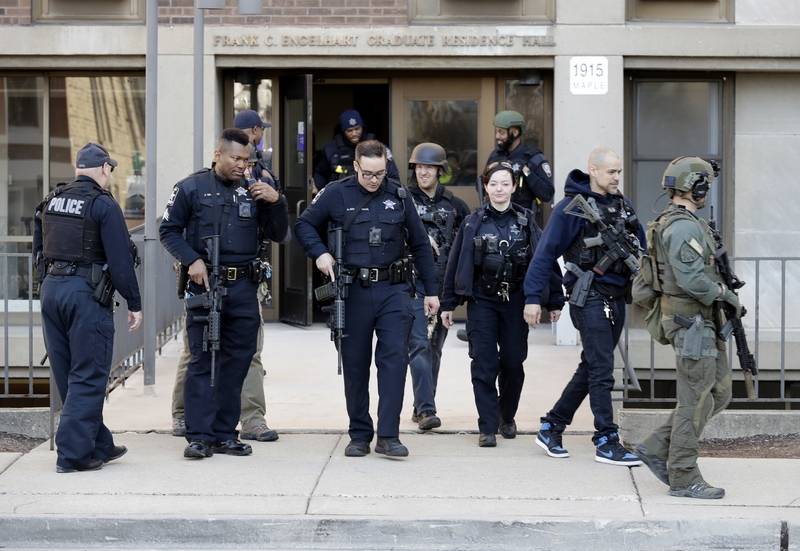Northwestern hoax tests school safety
Northwestern and surrounding schools respond to swatting incident
A report of an armed man on Northwestern campus on Mar. 14, hours after hundreds of students participated in a nationwide walkout, was confirmed to be a hoax by Evanston police.
At approximately 2:15pm, the Evanston police department received a call from a man saying that he shot his girlfriend in Engelhart hall, located on the south side of campus, which has apartments for Northwestern graduate students and their families.
Police rushed to the scene, only to discover the apartment they were looking for had been vacant since late 2017. The number that called in the tip was tracked to Rockford, IL, approximately 86 miles away.
The real “girlfriend” and the “shooter” were unaware of the incident, according to a bulletin sent out by the city of Evanston on Mar. 15.
A quick and thorough investigation led the police department to conclude the situation was a swatting incident, meaning someone made the false emergency call with the aim of drawing a large response from law enforcement and civilians.
The event succeeded in drawing attention from the police, as well as testing the safety procedures of nearby schools, like Beacon Academy.
According to The Chicago Tribune, an alert went out to students and staff shortly before 2:30pm., warning them to stay away from the area of Engelhart Hall.
“This is the Northwestern University Emergency Notification System,” an email blast to students began. “This is not a drill.”
Along with emails, the school sent out tweets, Facebook updates, and called students family members to inform every one of the situation.
“Northwestern was really great at notifying us about the alleged man with a gun on campus. I received an email, a text message and a phone call every time they updated us on what was going on,” said NU sophomore Elizabeth Byrne.
“The head of our school told us that there had been a situation involving a gunman at Northwestern, and that the police were dealing with it. They let us know that they weren’t going to let us out until they were positive it was okay” said Beacon freshman Lilly Schar.
“After the first phone call there was no one outside and it was kinda creepy like a ghost town,” said Byrne, who noticed how quickly students scrambled to safe spaces.
Byrne was in her sorority when the school told everyone to get into a safe area. She said she was locked down for about an hour.
“We were all standing in a community area in the school, calling our parents to let them know we were okay. People were pretty calm generally, so there wasn’t a lot of commotion,” said Schar.
While the danger was suspected to be on the college campus, nearby schools prepared for the emergency without causing an outburst of emotion.
“I didn’t even know about the event until I got out of class and tried to leave,” said Beacon junior Ben Francis. “I wouldn’t change anything about how we handled it honestly. The school did a good job keeping us calm, and only giving out information as needed.”
Aside from noticing how well the school and students responded to the possible threat, Schar also noticed a change in students attitudes.
“We’ve had drills before but never took them very seriously,” she said. “This definitely changed how people think because we’ve finally had enough. We’ve finally realized that we are the ones who have the power to change what is happening. We had to step into that leadership role.”
After the event, NU freshman Nora Crumley realized some differences between the safety procedures at highschool and those at college.
“In general, I think there is a lot more control in high school. In college, there is no advisor or teacher to check in with and who will reassure you everything it going to be okay,” Crumley added. “No one is telling you what to do and you rely very much on your friends.”
Hours after the hoax was called in, the university’s president Morton Schapiro sent one final email out to Northwestern community members, assuring them of the campus’ safety.
“This incident gave us the opportunity to test our response and our emergency notification processes that are used when receiving a report of an active shooter,” wrote Schapiro. “On a day when many of us joined thousands around the country in calling for an end to gun violence, we are particularly thankful that our campus remains safe.”






































